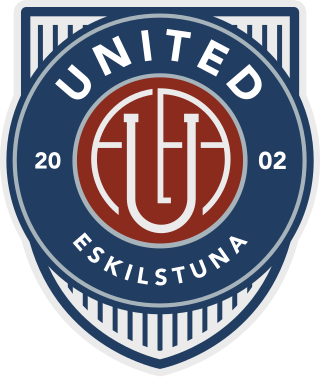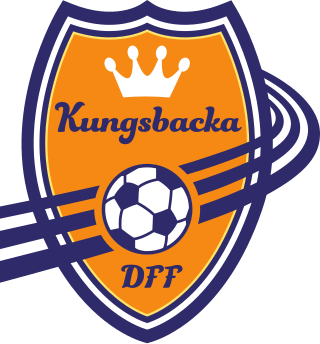The Northern Premier League is an English football league that was founded in 1968. Together with the Isthmian League and the Southern League it forms levels seven and eight of the English football league system.

The J1 League, known as the Meiji Yasuda J1 League for sponsorship reasons, is the top level of the Japan Professional Football League system. Founded in 1992, it is one of the most successful leagues in Asian professional club football history. Contested by 18 clubs, it operates on a system of promotion and relegation with the J2 League. It was known as the J.League from 1993 to 1998 before becoming a two-division league, and as J.League Division 1 from 1999 to 2014.
The Scottish football league system is a series of generally connected leagues for Scottish football clubs.
The English football league system, also known as the football pyramid, is a series of interconnected leagues for men's association football clubs in England, with five teams from Wales, one from Guernsey, one from Jersey and one from the Isle of Man also competing. The system has a hierarchical format with promotion and relegation between leagues at different levels, allowing even the smallest club the theoretical possibility of ultimately rising to the very top of the system, the Premier League. Below that are levels 2–4 organised by the English Football League, then the National League System from levels 5–10 administered by the FA, and thereafter Regional feeder leagues run by relevant county FAs on an ad hoc basis. It also often happens that the Premier Division of a Regional Feeder League has its constitution given to it by the FA. They have to accept it or appeal but can not reject it at an AGM.

The Damallsvenskan, Swedish for ladies all-Swedish and also known as OBOS Damallsvenskan for sponsorship reasons, is the highest division of women's football in Sweden. It is also referred to as the women's Allsvenskan. The term Allsvenskan alone is used to reference the men's division.
The Cyprus football league system is a series of interconnected leagues for club football in Cyprus. The system has a hierarchical format with promotion and relegation between leagues at different levels. The top three leagues are organised by the Cyprus Football Association and the rest by the S.T.O.K..
The Dutch football league system consists of two fully professional leagues and eight levels of amateur football leagues. The three highest amateur leagues, the Tweede, Derde and Vierde Divisie play in nationwide leagues and the five levels below are regional leagues.
The Japanese association football league system is organized in a pyramidal shape similar to football league systems in many other countries around the world. The leagues are bound by the principle of promotion and relegation; however, there are stringent criteria for promotion from the JFL to J3, which demands a club being backed by the town itself including the local government, a community of fans and corporate sponsors rather than a parent company or a corporation.
Football in Estonia is governed by the Estonian Football Association. The EJL controls the domestic club championships, the Estonian Cup, Estonian SuperCup, Estonian Small Cup and the national teams.
The Icelandic football league system is a series of interconnected leagues for club football in Iceland. As of 2013 a fifth level was added to the previous men's format of four levels. As of 2019 there are 79 participating men's teams and 27 women's teams in the football league.
Men's Rugby union in England consists of 106 leagues, which includes professional leagues at the highest level, down to amateur regional leagues. Promotion and relegation are in place throughout the system.
The Czech Republic football league system is a series of interconnected leagues for club football in the Czech Republic.
The Trinidad and Tobago football league system, also known as the football pyramid, is a series of interconnected leagues for men's association football clubs in Trinidad and Tobago. The system has a hierarchical format with promotion and relegation between leagues at different levels and is governed by the Trinidad and Tobago Football Association at the national level. There are over eight individual leagues, containing more than ten divisions. The exact number of clubs varies from year to year as clubs join and leave leagues or fold altogether, but an estimated average of 10 clubs per division implies that more than 100 clubs are members of a league in the Trinidad and Tobago football league system.
The Malaysian football league system, also known as the Malaysian football pyramid, is a series of interconnected leagues for men's association football clubs in Malaysia. The system has a hierarchical format with promotion and relegation between leagues at different levels, allowing even the smallest club the hypothetical possibility of ultimately rising to the very top of the system. The exact number of clubs varies from year to year as clubs join and leave leagues or fold altogether, but an estimated average of 10 clubs per division implies that hundreds of teams are members of a league in the Malaysian men's football league system.

Eskilstuna United DFF is a football club from Eskilstuna, in Södermanland County, Sweden. The club was established in 2002 and was promoted into the Women's Premier Division (Damallsvenskan) for the first time in 2014.
The 2014 Damallsvenskan, part of the 2014 Swedish football season, was the 27th season of Damallsvenskan since its establishment in 1988. The season started on 13 April 2014 and ended on 19 October 2014. LdB Malmö, which was renamed to FC Rosengård in December 2013, were the defending champions and won the title with several match days before the end of the season.
The Malaysia M4 League, also known as the al-ikhsan Cup for sponsorship reasons, is the third tier football league in the Malaysian football league system. The league was created in 2018 as part of the Malaysian Football League's plan to reform the Malaysian football league structure.

Kungsbacka DFF is a football club from Kungsbacka, in Halland County, Sweden. The club was established in 2013 and was promoted into the Women's Premier Division (Damallsvenskan) for the first time in 2018.
The 2020 Damallsvenskan was the 33rd season of the Swedish women's association football top division, Damallsvenskan. The league was originally set to commence on 3 April 2020, but due to the effects of the COVID-19 pandemic it was postponed, and eventually set to begin on 27 June, and end on 15 November. All matches were played without spectators.
The Danish football league system, also known as the football league pyramid, refers to the hierarchically interconnected league structure for association football in Denmark, in which all divisions are bound together by the principle of promotion and relegation. Within men's association football, the top two professional levels contain one division each. Below this, the semi-professional and amateur levels have progressively more parallel divisions, which each cover progressively smaller geographic areas. The top four tiers are classed as nationwide, while the fifth tier and below are classed provincial leagues. Teams that finish at the top of their division at the end of each season can rise higher in the pyramid, while those that finish at the bottom find themselves sinking further down. In theory it is possible for even the lowest local amateur club to rise to the top of the system and become Danish football champions one day. The number of teams promoted and relegated between the divisions varies, and promotion to the upper levels of the pyramid is usually contingent on meeting additional criteria, especially concerning appropriate facilities and finances.



